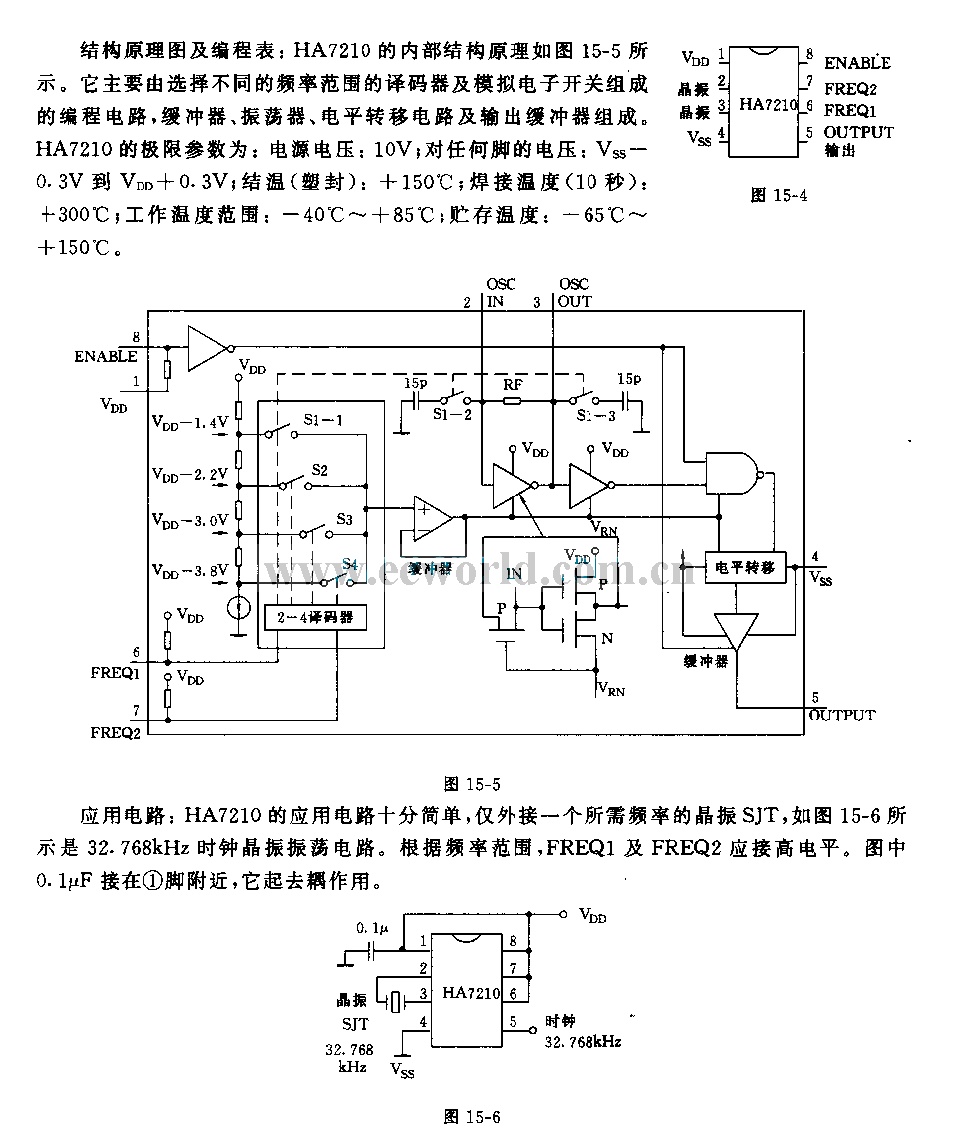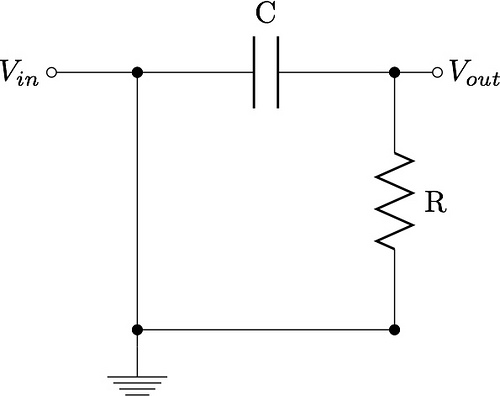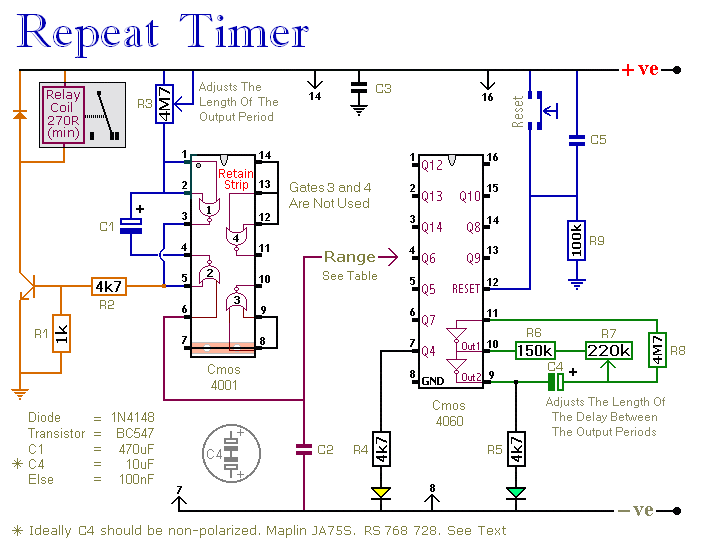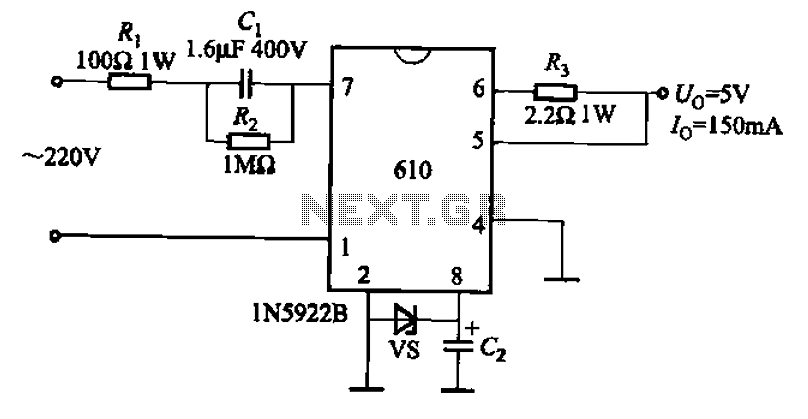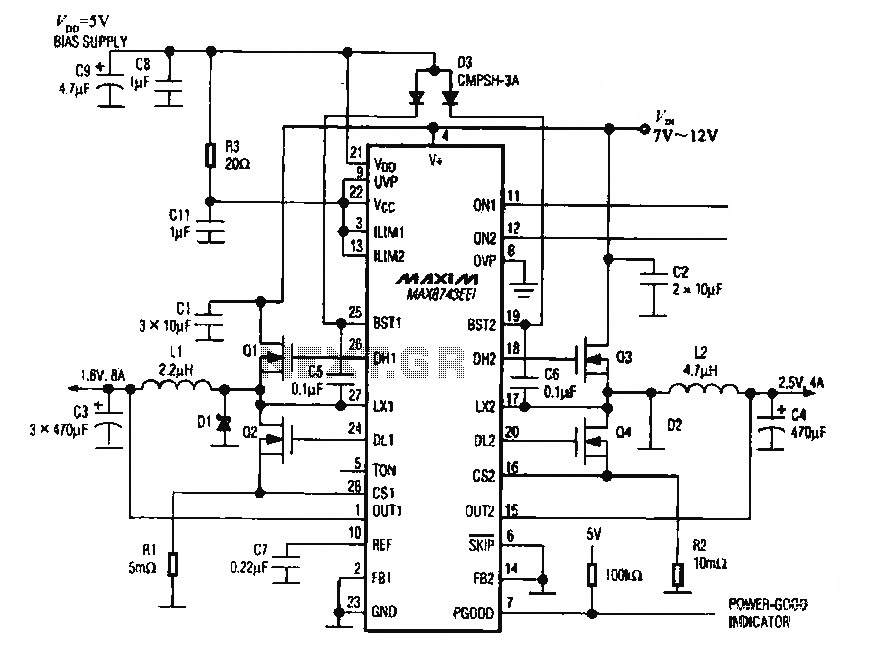
Darkroom circuit one time exposure
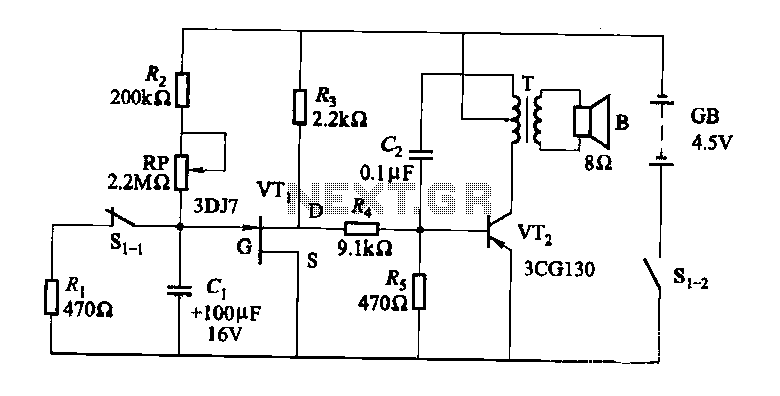
The darkroom circuit is designed for one-time exposure and emits an audible signal when the developing time is reached. This circuit can be utilized for photofinishing large timers and other applications. It comprises components such as FET VTi, resistors, capacitors, and additional elements that operate within a specified time segment, controlled by transistor VTz, transformer T, and a sound signal segment B. When the potentiometer resistance RP is set to zero, the timer delay is between 1 to 1.5 minutes; when RP is adjusted to its maximum, the delay extends to 10 to 15 minutes. The tone of the audio signal is influenced by the capacitance of capacitor Cz, while the delay time is determined by the capacitance of capacitor Cl. By closing switch S, the exposure process initiates (the exposure lamp circuit is not shown), and an audible signal is produced at the horn. It is recommended to cut off the power supply at the end of the exposure to conserve energy.
The darkroom circuit for one-time exposure is a practical solution for timing applications in photographic development. It includes several key components that work together to provide a reliable timing mechanism. The circuit utilizes a field-effect transistor (FET), specifically VTi, which plays a crucial role in controlling the current flow and ensuring efficient operation of the timing function.
Resistors and capacitors are strategically included to shape the timing intervals. The potentiometer RP allows for user-adjustable timing, ranging from a minimum of 1 to 1.5 minutes to a maximum of 10 to 15 minutes, depending on the resistance set. This flexibility is essential for accommodating various exposure requirements and ensuring precise control over the development process.
The audio signal generated at the end of the timing cycle is produced through a combination of the transformer T and sound signal segment B, which drives a speaker or horn. This audible alert serves as a notification that the exposure time has elapsed, allowing the user to take necessary actions promptly.
Capacitor Cz is critical in determining the tone of the audio signal, while capacitor Cl governs the overall delay time. These components must be carefully selected based on their capacitance values to ensure that the circuit meets the desired specifications for both timing accuracy and sound quality.
To initiate the exposure process, switch S must be closed, activating the exposure lamp circuit (not depicted in the schematic). Upon completion of the exposure, it is advisable to disconnect the power supply to prevent unnecessary energy consumption and prolong the life of the circuit components.
Overall, this darkroom circuit design provides an efficient and user-friendly solution for managing exposure times in photographic development, ensuring that users receive timely notifications while maintaining energy efficiency.Darkroom circuit one time exposure It audible signal when the developing time is coming. This circuit can be used to put photofinishing big timer, it can also be used for many other occasions. The FET VTi, resistors, capacitors and other components at a given time segment, by the transistor VTz, transformer T and the speaker sound signal segment is B and so on. When the potentiometer resistance RP adjusted to zero, the timer delay of 1 ~ 1.5 min; RP when resistance is adjusted to the maximum, the timer delay is 10 ~ 15min.
Tone audio signal depends on the capacity of the capacitor Cz, and the delay time depends on the capacitance Cl capacity. Closing the switch s, the exposure start (exposure lamp circuit, not shown), the audible signal at the end of the horn.
And this time should be cut off the power supply to avoid wasting energy.
The darkroom circuit for one-time exposure is a practical solution for timing applications in photographic development. It includes several key components that work together to provide a reliable timing mechanism. The circuit utilizes a field-effect transistor (FET), specifically VTi, which plays a crucial role in controlling the current flow and ensuring efficient operation of the timing function.
Resistors and capacitors are strategically included to shape the timing intervals. The potentiometer RP allows for user-adjustable timing, ranging from a minimum of 1 to 1.5 minutes to a maximum of 10 to 15 minutes, depending on the resistance set. This flexibility is essential for accommodating various exposure requirements and ensuring precise control over the development process.
The audio signal generated at the end of the timing cycle is produced through a combination of the transformer T and sound signal segment B, which drives a speaker or horn. This audible alert serves as a notification that the exposure time has elapsed, allowing the user to take necessary actions promptly.
Capacitor Cz is critical in determining the tone of the audio signal, while capacitor Cl governs the overall delay time. These components must be carefully selected based on their capacitance values to ensure that the circuit meets the desired specifications for both timing accuracy and sound quality.
To initiate the exposure process, switch S must be closed, activating the exposure lamp circuit (not depicted in the schematic). Upon completion of the exposure, it is advisable to disconnect the power supply to prevent unnecessary energy consumption and prolong the life of the circuit components.
Overall, this darkroom circuit design provides an efficient and user-friendly solution for managing exposure times in photographic development, ensuring that users receive timely notifications while maintaining energy efficiency.Darkroom circuit one time exposure It audible signal when the developing time is coming. This circuit can be used to put photofinishing big timer, it can also be used for many other occasions. The FET VTi, resistors, capacitors and other components at a given time segment, by the transistor VTz, transformer T and the speaker sound signal segment is B and so on. When the potentiometer resistance RP adjusted to zero, the timer delay of 1 ~ 1.5 min; RP when resistance is adjusted to the maximum, the timer delay is 10 ~ 15min.
Tone audio signal depends on the capacity of the capacitor Cz, and the delay time depends on the capacitance Cl capacity. Closing the switch s, the exposure start (exposure lamp circuit, not shown), the audible signal at the end of the horn.
And this time should be cut off the power supply to avoid wasting energy.
Warning: include(partials/cookie-banner.php): Failed to open stream: Permission denied in /var/www/html/nextgr/view-circuit.php on line 713
Warning: include(): Failed opening 'partials/cookie-banner.php' for inclusion (include_path='.:/usr/share/php') in /var/www/html/nextgr/view-circuit.php on line 713
